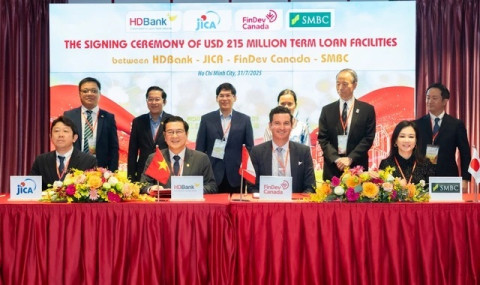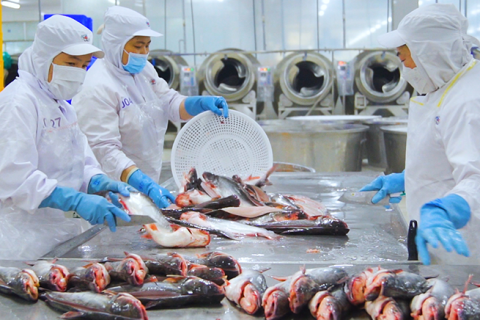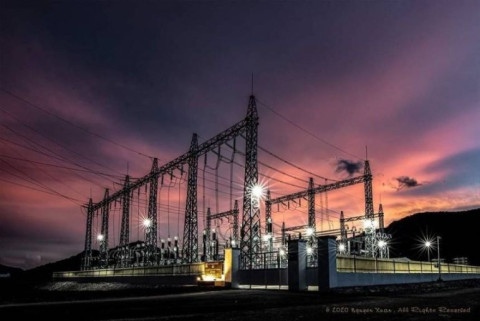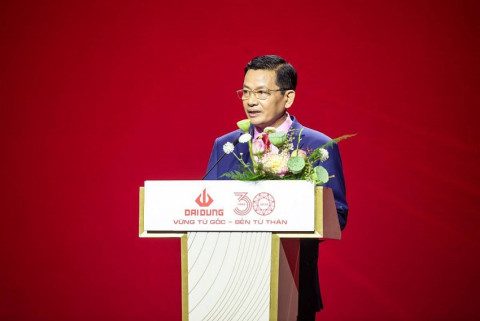Reducing the carbon footprint in production at the nation's largest dairy company
- 249
- Brand
- 23:29 18/07/2023
DNHN - As a large dairy company in Vietnam, with 13 factories and 13 farms spread across the country, Vinamilk demonstrates leadership in activities to reduce carbon footprint and manage emissions. Greenhouse gas.
Mr. Le Hoang Minh, Production Executive Director and Net Zero Project Head at Vinamilk stated at the Green Trade Forum in 2023 with the theme "Active green transformation" that, with the understanding that any production activity affects the environment and community, Vinamilk strives to find ways to minimize these impacts and make efficient use of resources and energy.
Through activities, Vinamilk affirms its pioneering role in managing and minimizing carbon footprint in production and business activities, and assists the government in implementing the "National Strategy on Climate Change" post-period to 2050, as well as the Net Zero goal committed at COP26.
A representative of Vinamilk added that the greening process in Vietnam still faces numerous obstacles. "Because emission reduction is not the sole responsibility of a single company, as we are part of a shared value chain. Vinamilk also has emission indicators for its suppliers, consumers, and their activities, which, if converted, would account for 80% of total emissions. Therefore, this problem cannot be resolved without the collaboration of businesses and the community." Mr. Minh shared in the forum's periphery.
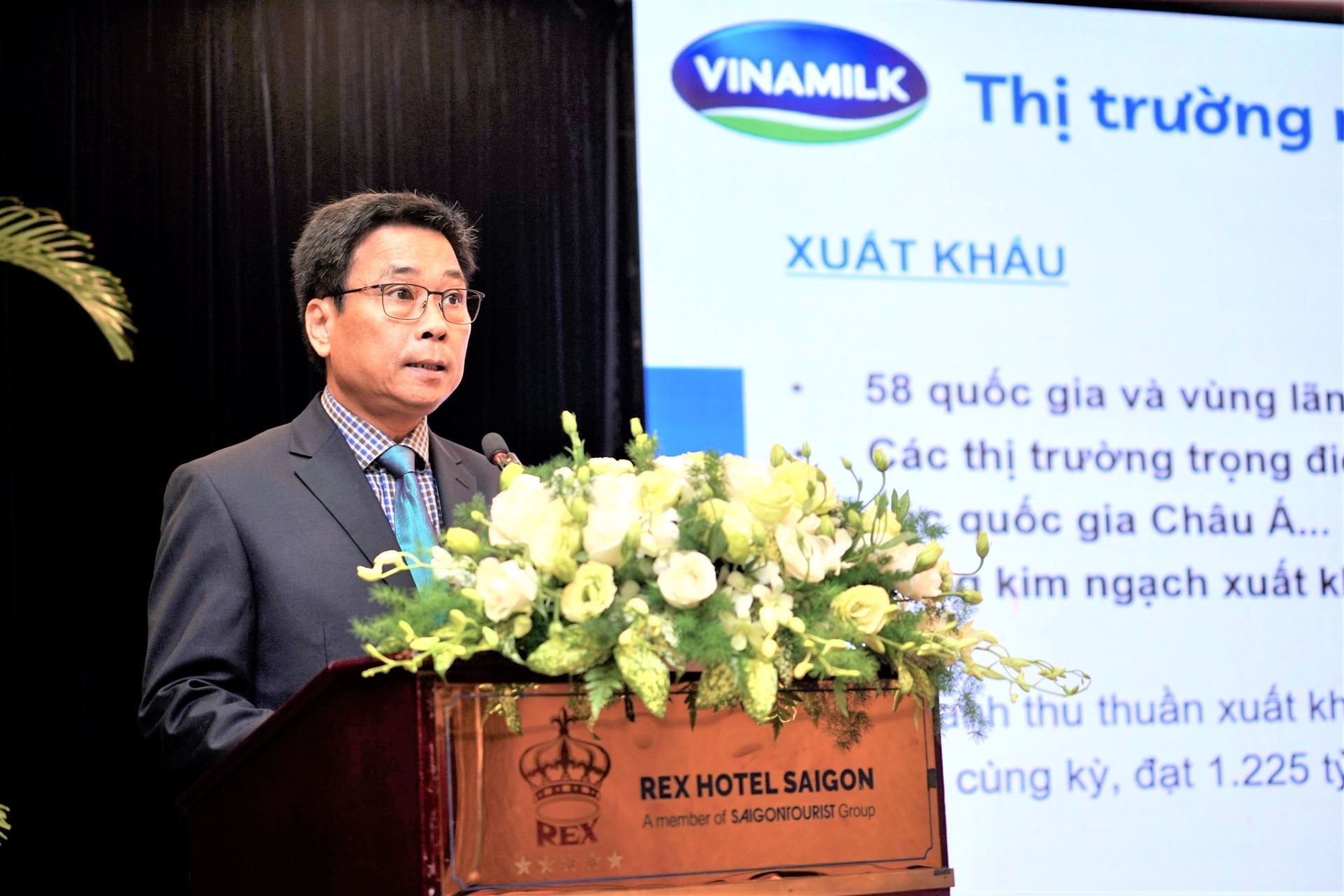
The "Nature – People – Products" pillars cannot be separated.
Vinamilk is currently one of the world's top 36 largest dairy companies in terms of revenue (Revenue 2022: over 60,000 billion VND). The company currently manages 15 farms and 17 factories domestically and internationally, as well as 13 subsidiaries, joint ventures, and affiliates. Particularly in Vietnam, Vinamilk's network of factories and farms represents the industry's largest scale.
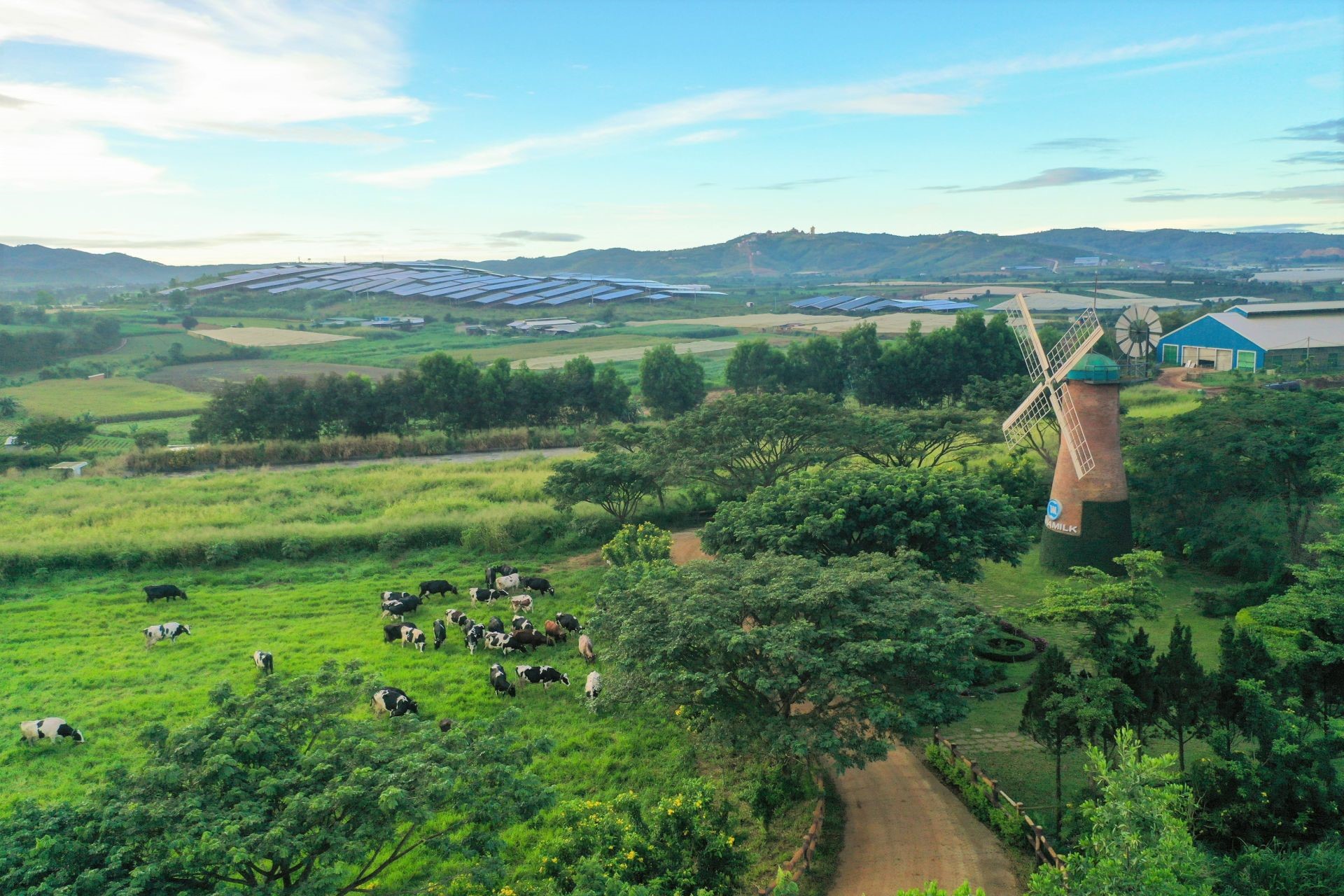
Vinamilk, which operates in the dairy production and breeding industry, bases its sustainable development on three main pillars: Nature - People - Products.
Mr. Le Hoang Minh shared that promoting technology application, implementing international standards practice, increasing the use of green energy, and circular economy are among the four battle axes. Vinamilk's 5-year strategy (from 2022 to 2026).
Vinamilk is renowned for its early awareness and implementation of sustainable development programs. Since 2012, this is a rare domestic organization that has published a reference sustainability report by the GRI global sustainability reporting standards and the Sustainable Development Goals (SDGs) of the United Nations. This report has been audited by the world's leading auditing firm to ensure transparency, clarity, and completeness.
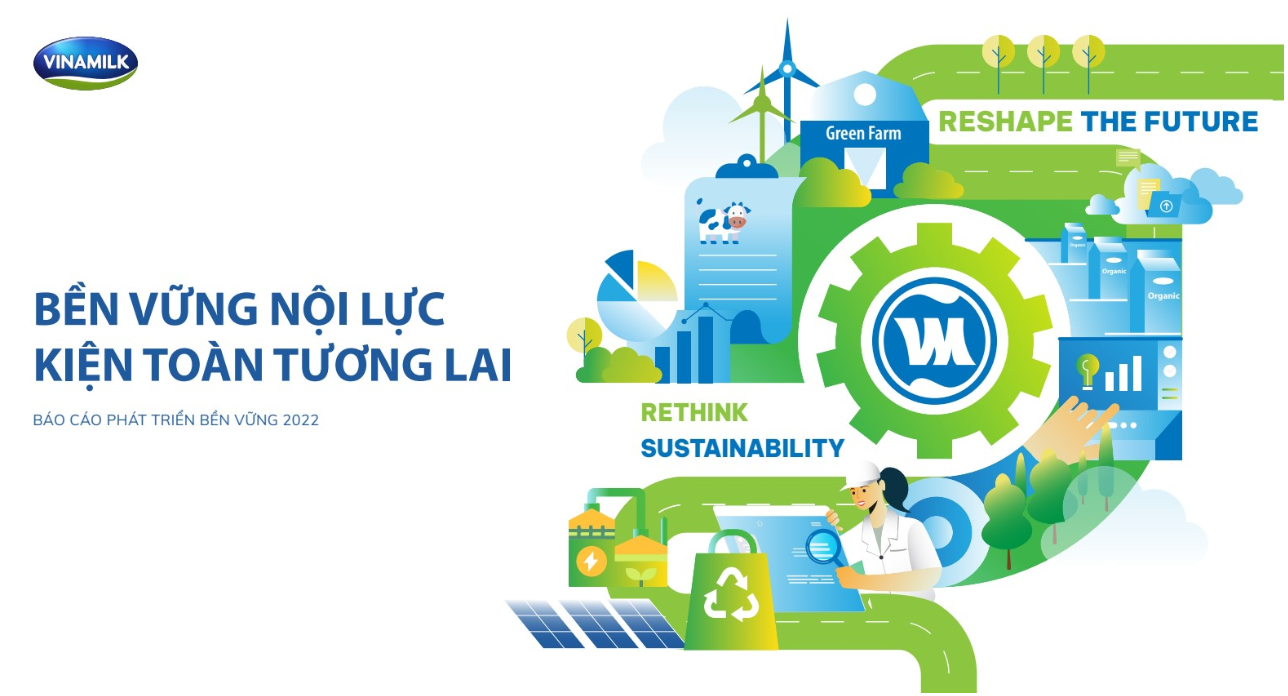
Reduce Carbon Footprint and Strive for Zero Carbon
Greenhouse gas emission management is one of the eleven key areas in which Vinamilk plans to invest to promote sustainable development. Vinamilk's recent announcement of a roadmap to Net Zero by 2050 and the first factories and farms to achieve carbon neutrality according to international standards PAS 2060:2014 exemplifies this point.
Vinamilk Nghe An Dairy Factory and Vinamilk Nghe An Dairy Farm are the first two units to attain carbon neutrality by PAS2060:2014 standards, having absorbed more than 17,560 tonnes of CO2. This result is a result of the "dual action" of reducing emissions in production and animal husbandry while maintaining a forest fund to absorb greenhouse gases for decades.
Vinamilk was previously the first dairy company in Vietnam to participate in Pathways to Dairy Net Zero (Global Initiative of the Dairy Industry on Net Zero) and the first dairy company in Asia to collaborate with the Framework Organisation. Sustainable Development of the World Dairy Industry (DSF) conducts an assessment program to identify key aspects of sustainable development at Vinamilk and the Vietnamese dairy industry.
With the specific roadmap of 15% greenhouse gas reduction by 2027, 55% reduction by 2035, and Net Zero by 2050, Vinamilk focuses on four aspects of Sustainable Livestock. - Green Production - Environmentally friendly logistics - Sustainable consumption.
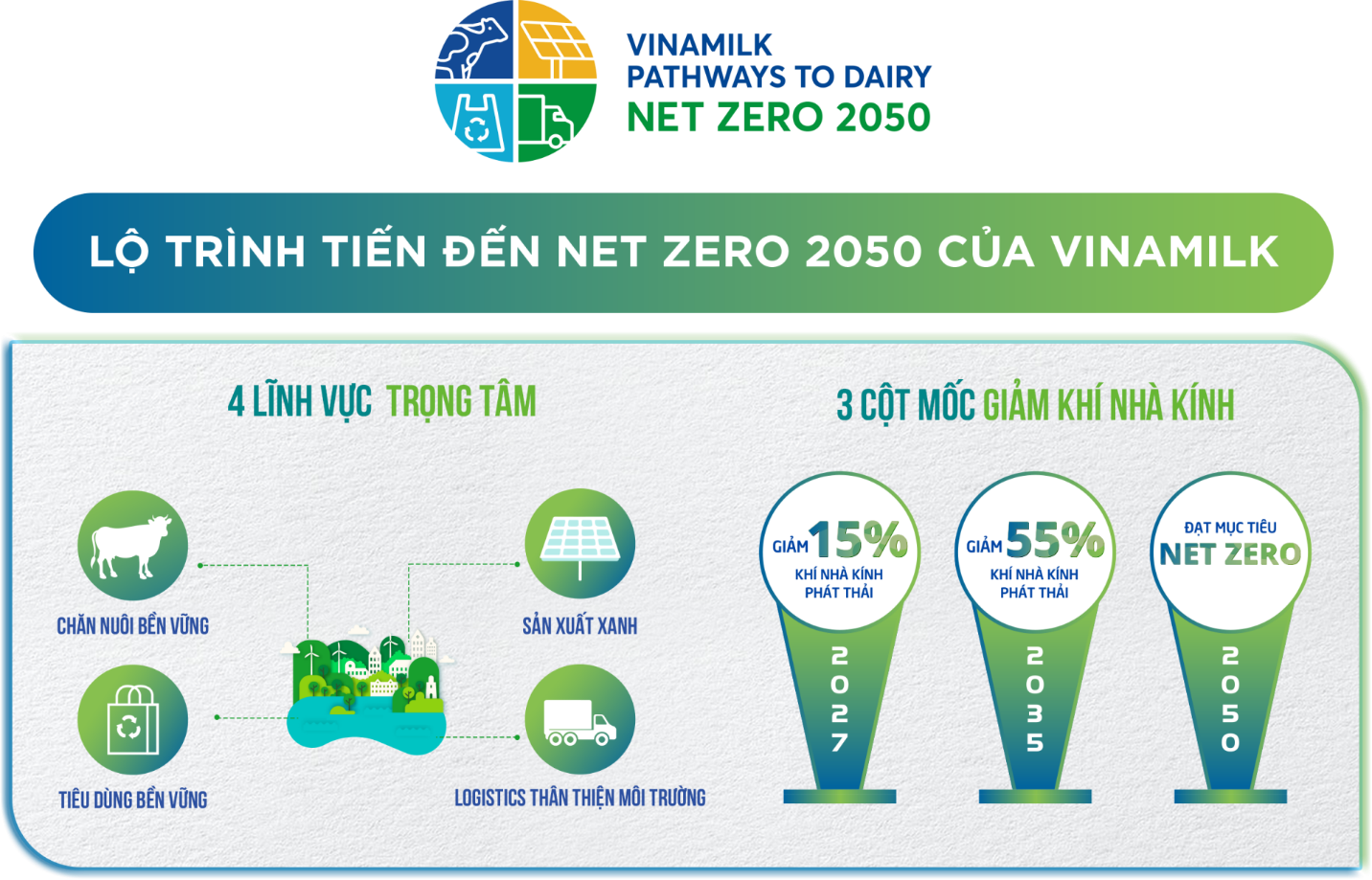
Vinamilk's leaders cited the use of the Biogas system to convert waste into resources (fertilizers, water, and gas), and 70% of the farmland is cultivated using only organic methods. 87% of the farm's energy comes from renewable sources, such as Biomass and CNG, which replace fossil fuels; 15% to 20% of the farm's electricity comes from solar power. Additionally, Vinamilk invests in energy-saving technologies including self-propelled robots, heat recovery and reuse systems, etc.
Following the success of the "One Million Trees for Vietnam" program (2012-2020), Vinamilk partnered with the Natural Resources and Environment Newspaper to implement the project of planting trees towards Net Zero in five years (2023-2027). Future "Net Zero forests" will be created to increase tree coverage across the country, thereby reducing the effects of climate change and contributing to the formation of "Net Zero forests." This year, more mangroves will be planted in Ca Mau, as this type of forest has a high CO2 absorption capacity and helps limit many other negative climate change-related phenomena. – Mr. Minh added.
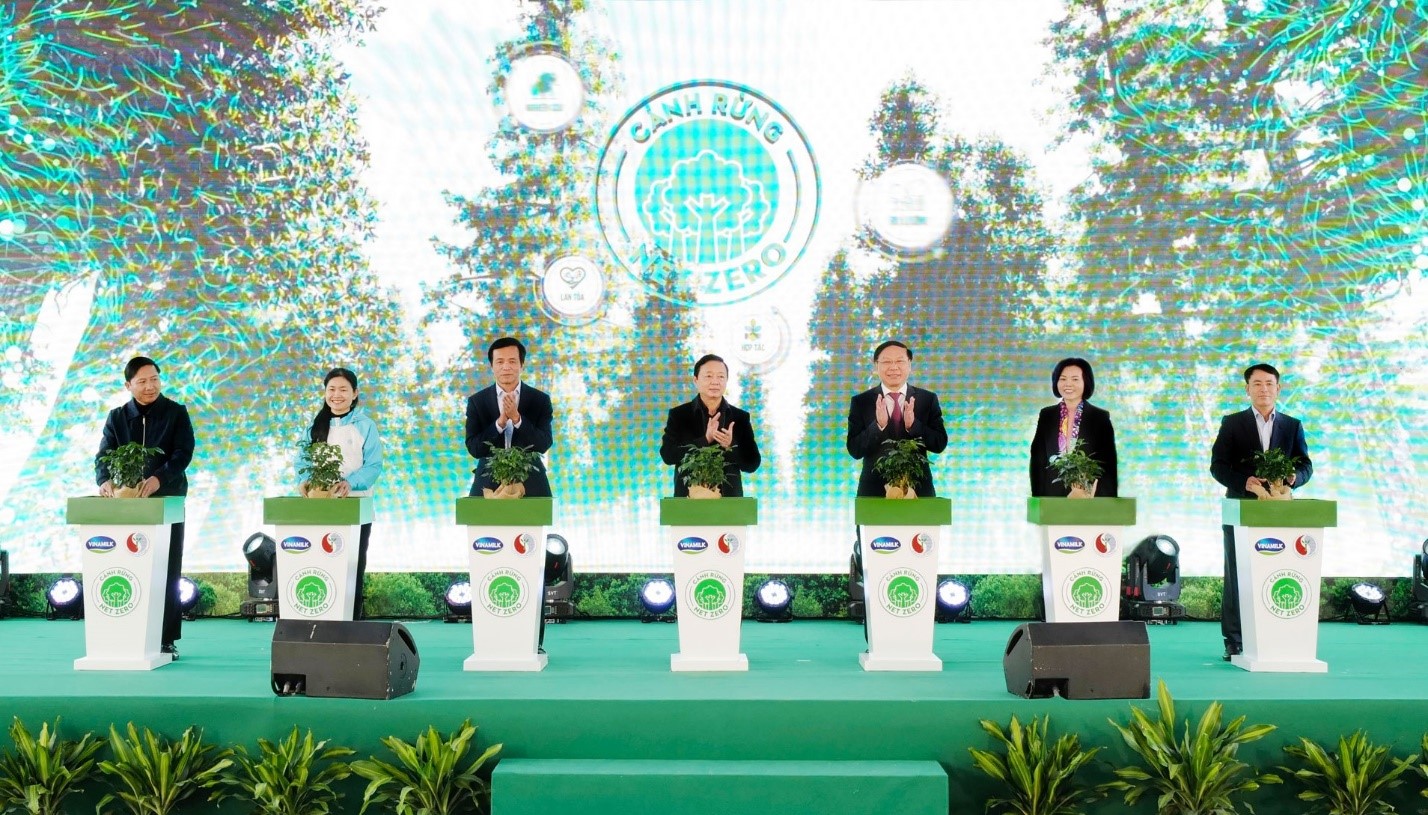
*Carbon footprint is the total amount and level of greenhouse gas emissions resulting from the direct or indirect production and consumption of goods and services by humans.
PV
Related news
- From New Year messages of World Leaders to the “new rules” of the Global economy in 2026
- Connecting Leaders, Shaping the Future: Strategic Leadership Planning Meeting – CorporateConnections Hanoi A
- Sunlight - Unilever Vietnam Recognized for Outstanding Contributions to the National Initiative Supporting Women Entrepreneurs
- Deputy Prime Minister Nguyễn Chí Dũng: “The country’s major challenges weigh heavily on my mind — and we must resolve them together.
- Unitsky String Technologies signs cooperation agreements with three Vietnamese partners, opening a new direction for smart mobility and sustainable development
- When artists do business – livelihood is no poetry!
- Before the D‑day to abolish flat‑rate tax: Fear of technology and costs leave small traders struggling to adapt
- Vietnamese enterprises at a crossroads: the impact of a potential US–China deal
- "Digital technicians" must not be forgotten if Vietnam aims to meet its strategic goals
- HDBank: Impressive profit growth, leading in profitability and advancing international integration
- TNI King Coffee sued for over VND 5 Billion in unpaid debts
- VINASME and Jeonnam Technopark Sign MOU on technology cooperation, human resource training, and trade promotion
- Vietnamese entrepreneurs strengthen ASEAN connectivity in the digital iIntegration era
- Prime Minister: Vietnam aims to become a regional logistics hub
- Vietnam upgraded to Secondary Emerging Market by FTSE Russell
- Hanoi’s economy grows 7.92% in first nine months of 2025, FDI surges nearly threefold
- Vietnam’s strong gdp growth fails to ease labor market distress
- US tariffs on Brazil propel Vietnam’s pangasius into global spotlight
- VietLeap AI Accelerator launches: A strategic springboard for Vietnam’s AI startups
- CICON expands strategic alliances: A new step forward in Vietnam–Korea business connectivity
Đọc thêm Brand
Hoàng Hải Anh and his young peers launch MR. Burgers – a Halal dining destination in Hanoi
At the age of 18, Hoàng Hải Anh (Haris) and his friends have introduced MR. Burgers, bringing the clean Halal food experience to visitors in Hanoi.
SK Innovation and HD Hyundai (South Korea) step up cooperation with Khánh Hòa Province (Vietnam)
The new cooperation and investment expansion plans of South Korea’s leading conglomerates reaffirm Khánh Hòa’s growing appeal in the eyes of international investors.
A trade fair organizer surprises by joining the ranks of top-earning listed companies
Financial results for Q2 and the first half of 2025 have been announced by numerous companies listed on the Vietnamese stock market.
HDBank secures USD 215 million syndicated loan from JICA, SMBC, and FinDev Canada
HDBank has signed a syndicated loan agreement worth USD 215 million with three international financial institutions: Sumitomo Mitsui Banking Corporation (SMBC), FinDev Canada, and the Japan International Cooperation Agency (JICA).
Sao Mai Group’s pangasius export segment embraces new opportunities
IDI – a member of Sao Mai Group – is building its third factory, aiming to significantly enhance export capacity to capitalize on new opportunities in the U.S. market.
The foundational mark of pioneers in renewable energy amidst an evolving legal framework
Vietnam’s renewable energy journey was marked by bold early investment at a time when the legal framework was still taking shape.
LAMORI – The Spirit of Lam Kinh in Every Breath
LAMORI is more than a luxury retreat—it is a harmonious convergence of boundless nature and sacred historical roots.
The Đại Dũng Group: A 30-Year journey of developing a sustainable value chain
In the context of globalization and sustainable development trends, Đại Dũng Group stands out with its 30-year journey in the fields of mechanical manufacturing, construction, and steel structure.
Rediscovering connection – a journey of discovery at LAMORI
LAMORI Resort & Spa is more than just a retreat; it is a destination for souls seeking reconnection, where every moment brings a meaningful experience.
Southern Vietnamese woman takes Ngoc Linh netted rice paper to all corners of the world
The Cai Be craft village has long been famous for many specialties of the Southern region of Vietnam. However, if it weren't for an unexpected event over 20 years ago, people would not know how Ngoc Linh netted rice paper has spread globally.





